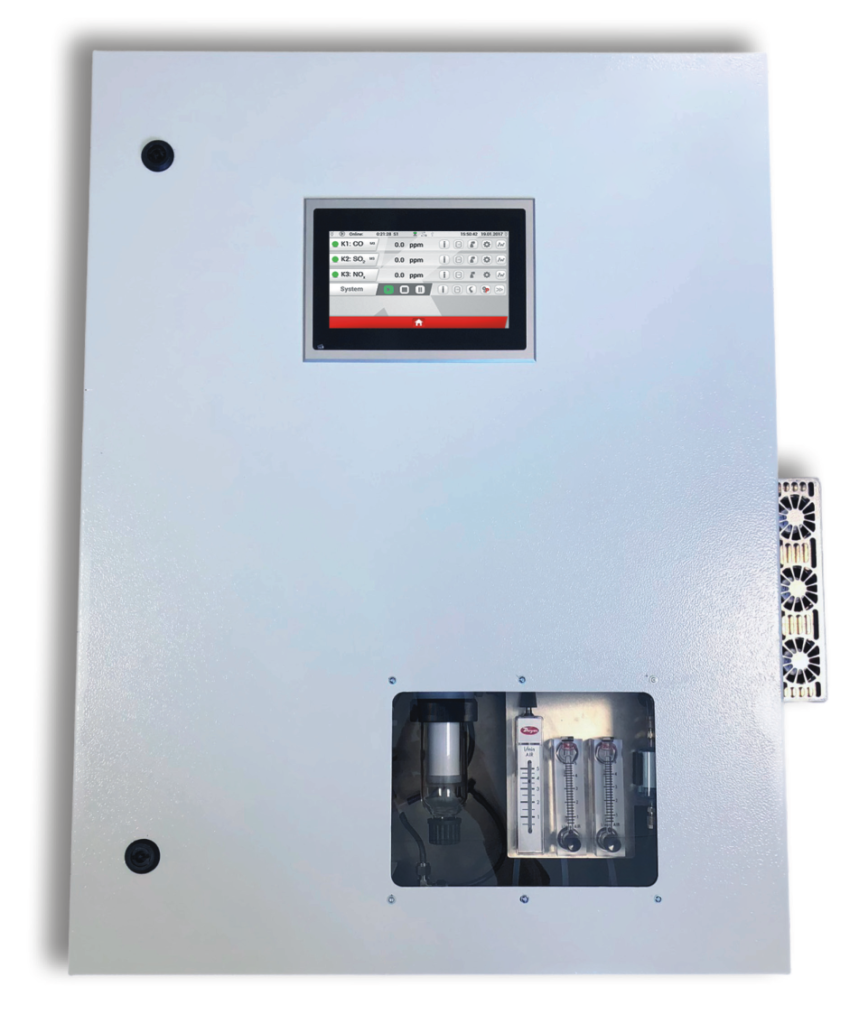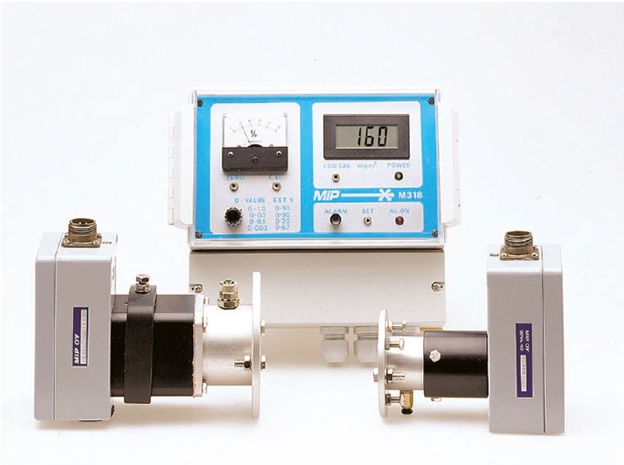Emission Monitoring
Continuous Emission Monitoring System (CEMS)
Continuous Emission Monitoring Systems (CEMS) are employed to detect the levels of Carbon Monoxide (CO), Sulphur Dioxide (SO2), Nitrogen Oxides (NOx), Carbon Dioxide (CO2), and Oxygen (O2) in flue gases. These analyzers offer critical data for industrial combustion processes and are essential for emission tuning and control.
Flue gases, a major contributor to acid rain, must be monitored and regulated according to CPCB guidelines. In addition to the gases mentioned, CEMS analyzers also measure other substances such as Ammonia (NH3), Hydrogen Chloride (HCl), Hydrogen Fluoride (HF), and Methane (CH4).
With the exception of Oxygen, all other gases are measured using sensors such as Non-Dispersive Infrared (NDIR), Laser Absorption Spectroscopy (LAS), Tunable Laser Absorption Spectroscopy (TDLAS), Electrochemical (EC), Chemiluminescence (CLD), and Photoacoustic (PAS). Oxygen levels are determined using Electrochemical, Paramagnetic, or Zirconia sensors. Among these gases, CO2 and O2 are quantified in percentage (%), while the remaining gases are measured in parts per million (ppm) or parts per billion (ppb).

Our CEMS analyzers utilize the Cool-Dry Extraction method to measure flue gases. A sampling probe with an integrated mesh filter is installed in the stack to collect the flue gas. The extractive CEMS systems cool the sample under controlled conditions to condense out the water and dry the sample before sending it to the analyzer. This process, known as cool, dry, or dry basis analysis, can lead to errors with gases like SO2 and NO2, which may be affected by the removal of water. Additionally, highly water-soluble gases such as NH3, HCl, and HF cannot be accurately measured with this method.
Fast Response time, High Sensitivity, High Precision, Low Drift and easy for Maintenance.
Immune to cross sensitivity between the gases.
5” to 7” TFT display to monitor the gases simultaneously.
The LAS, TDLAS, PAS, CLD type of CEMS analyzers offers high sensitivity in the order of ppb to ppm.
Our CEMS analyzers have auto calibration and remote calibration features making them easy to maintain.
Portable Flue gas Detector
In certain industries, flue gas analyzers must be portable to accommodate brief stack operations. These analyzers are transported to stack locations, where the sample probe is installed inside the stack to measure gas presence. Unlike fixed CEMS analyzers, the portable probes need to be easily inserted and removed due to the short duration of stack operation.

Stack Dust Monitor
PRINCIPLE OF OPERATION :
Laser Dust Monitor operates on the single-pass principle, where a light beam traverses the measurement section only once. The receiver unit assesses the reduction in the light beam’s intensity due to dust presence. The optical density is displayed on an analog screen, while the mass-related optical density is shown on a digital display. A manual calibration check can be performed using an optical filter.
-
Features of Laser Light Source
-
Advantages of using a Laser Light Source
-
Features of the monitor unit
-
Typical
Applications
Laser light source-ultimate wavelength stability, excellent collimation and high sensitivity
Minimum optics needed - less maintenance
Optimal for stacks up to 20 meters (with optional 100mm lens up to 40 meters)
No moving parts-minimal maintenance
Large operation range ( 0 ... 90 %)
Good stability and reliability
Measuring path up to 20 meters possible, due to a narrow and intense laser light beam.
Excellent beam collimation (0,04 °) - no need to use lenses or mirrors in the transmitter making the system reliable and simple
Standard wavelength guarantees long-term accuracy and stability
The analyzer can be transferred to another location without factory calibration.
The alignment of the beam is easy because the beam is narrow.
4 operator selectable measuring ranges
Analogue and digital display
Settable alarm relay limit
0 ... 1 V DC and 4 … 20 mA current outputs
Power plants
Cement factories
Incinerators

